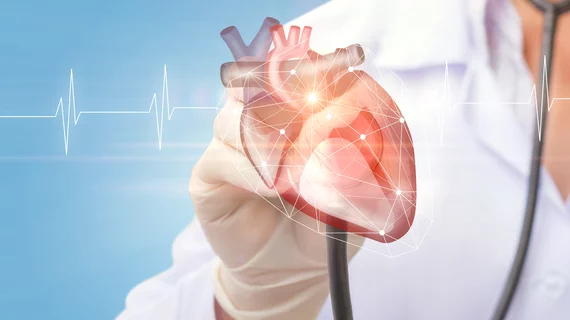CIED infection rates on the rise
The incidence of cardiovascular implantable electronic device (CIED) infection in the U.S. has been increasing for the past two decades, according to work published in JACC: Clinical Electrophysiology this month.
Despite tech advancements over the past few decades, cardiologists still lack a gold standard for treating CIED infection, Mingyan Dai, MD, of Wuhan University in China, and colleagues wrote in the journal. Even in 2019, patients who present with CIED infection can expect lengthy hospital stays, prolonged courses of antibiotics and potential device and lead removal—all of which come with their own risks.
What’s more, the authors said, is that we don’t have solid numbers on the subject. Current estimates of CIED infection rates in the U.S. are drawn from administrative and hospital databases, which have historically been unreliable.
“The estimated incidence of CIED infection increased from the 1990s to 2000s in the United States, and the rate of increase was out of proportion to that of CIED implantations,” Dai et al. wrote. “It has been suggested that, due to an aging population, increases in CIED implantation volumes for expanded indications and increases in multiple procedures after primary implantation, the prevalence of CIED-related infection may increase in the future.”
The researchers identified a cohort of all adults with CIEDs in Olmsted County, Minnesota, between 1988 and 2015, using the Rochester Epidemiology Project’s medical linkage system. They used the Kaplan-Meier method to estimate the cumulative rate of CIED infection in the population and followed up with the group for three decades after device implantation.
Dai and co-authors reported that the cumulative probabilities of overall CIED infection were 6.2% in the study pool at 15 years and 11.7% at 25 years of follow-up—a 5.5% total increase. The incidence of CIED infection every seven years from 1988 to 2015 was 1.3, 5.7, 4.1 and 4.7 per 1,000 person-years, respectively, and the 15-year cumulative probabilities of CIED infection were:
- 2.6% after the initial procedure
- 2.7% after the second procedure
- 24.1% after the third procedure
Consistent with that data, the authors noted patients seemed to fare much worse if their device was tampered with during the follow-up period. Generator changes were linked to a 3.9-fold increased risk of infection, and CIED upgrades were associated with a more than threefold risk, as well.
“An infection that complicates a simple generator change in a patient with a pre-existing device and older leads triggers a series of additional procedures, including the need for CIED and lead extraction, and the challenge of re-implantation when indicated,” Khaldoun G. Tarakji, MD, MPH, of the Cleveland Clinic, wrote in a related editorial. “It could also lead to unfavorable outcomes that are hard to measure. Prevention is the cornerstone to address CIED infection, and it is a responsibility shared by clinicians, researchers and industry.”
Tarakji said that for clinicians that means prevention starts from day one of evaluating a patient for a CIED, ensuring they view their recommendation as a “lifetime commitment.” He said pre-op antibiotics and adherence to sterility during implantation procedures are mandatory.
For researchers, he said prevention might mean better risk stratification for primary prevention ICD therapy. From industry, we’re looking for better battery longevity and more reliable leads.
“The investigators should be commended for reminding us that CIED infection is not only a procedure risk, but a lifetime risk,” Tarakji wrote. “As clinicians, researchers and industry, we collectively share the responsibility of getting this risk as close to zero as possible to continue to provide our patients with healthier and longer lives.”

